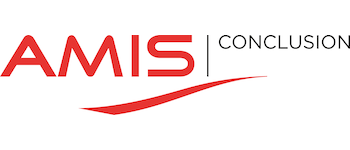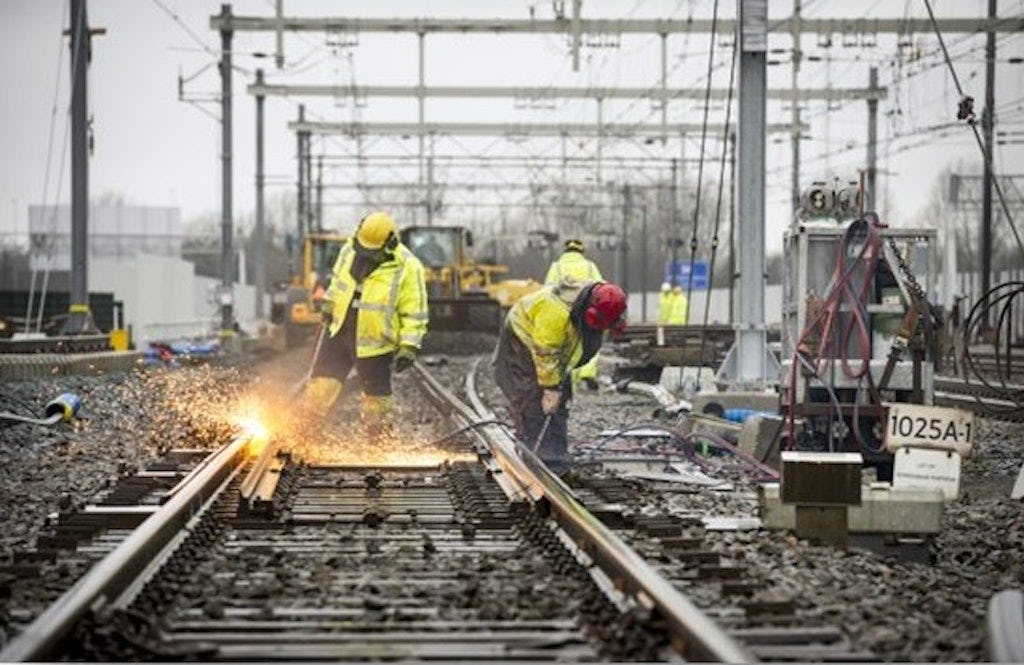More efficient maintenance of the railway through decentralized asset management and maintenance with blockchain distributed ledger
More efficient maintenance of the railway through decentralized asset management and maintenance with blockchain distributed ledger
Client
AMIS Conclusion

Market
Public Transport
Date published
22 december 2021

The goal
An unambiguous and up-to-date status of assets through Blockchain. This makes it possible to carry out autonomous maintenance and to update the status of objects in a decentralised manner. The asset information becomes more up-to-date and the quality improves. This makes the overall maintenance process more efficient.
The situation
The current subcontractors (OHA) depend on a central registration of asset information and the status of the assets for the execution of their work on the railway. This system is provided centrally by the manager of the rail infrastructure. For the mutations, the OHA is very dependent on the accuracy and timeliness of the information in this system. Modifying the data is time-consuming and sometimes involves incomplete and incorrect information. There are also other challenges in the system:
- Multiple parties are working on the same physical assets;
- During administrative maintenance of the asset information, groups of assets sometimes remain locked for a long time;
- Conflicts arise about the accuracy of the asset information; Implementing changes to the structure takes a long time;
- The audit log of events on the assets is difficult to retrieve, especially when transferring assets;
- Asset status and consumption information is not available or not available in time.
Unambiguous insight into the status and changes of the rail infrastructure
AMIS Conclusion has been asked to make a proposal in which the challenges in the system are reduced or completely solved with the use of blockchain distributed ledger. AMIS Conclusion has done this by demonstrating a working software solution. This solution, in the form of a platform, should offer a number of functionalities:
- A decentralized ledger for all assets and for all changes to the assets;
- A decentralized overview of all statuses and consumption information of all assets;
- The possibility for participants to make additions and changes on the platform;
- Compiling an unambiguous and unchangeable audit log on asset events; Approving changes in the platform via a mutually agreed consensus algorithm.
Resultaat
AMIS has delivered a working prototype and an action plan for the introduction of blockchain as an asset management solution for the rail manager, its subcontractors and other stakeholders. The plan proposes to apply the philosophy behind performance-based remuneration (PGB) even more effectively. In addition, the rail manager wants to decentralize the management and working method of maintenance and standardize the quality level among the subcontractors.
The plan describes how the rail manager can assign responsibility for the asset registration and the asset management model to the parties that work with it on a daily basis. To achieve this, all (asset) information is decentralized in a data model.
A first version of a blockchain solution has been built that drastically accelerates the processing of changes in properties and status changes of assets within the rail infrastructure. The rail operator is the supplier of the platform that can be adapted and improved by all parties after commissioning via the democratic consensus mechanism that blockchain technology offers. The platform consists of the technical infrastructure, the blockchain software, the application code (smart contract) running on all blockchain nodes in the network and a (local) user interface to interact with the data on the blockchain.
Project approach
Feasibility of the study
Interviews were conducted with various business experts within the organization. With these experts, we looked at the current business processes and the pain points that are felt on a daily basis. Based on the interviews, guidelines and standards and a plan of action were drawn up for the realization of the platform.
Plan of action
A plan of action has been delivered for the introduction of blockchain for asset management. This plan describes topics such as the context, current problems and the goals to be achieved. The plan also describes an initial planning and the possible risks and measures.
Blockchain infrastructure
To present the proposed solution, a demo environment was set up between various (virtual) parties, including the rail manager as platform manager/supplier. The blockchain infrastructure is based on Hyperledger Fabric and runs entirely in the cloud.
Blockchain application/ smart contract
AMIS Conclusion has drawn up a smart contract for the implementation of the functional application. This is a computer program code that implements the business rules and transactions that run on the blockchain infrastructure. The contract also defines assets (e.g. a switch), users (roles), events (e.g. maintenance or failure), transactions (e.g. creation, modification, commissioning and decommissioning) and possibilities to query data (e.g. retrieval of a list of assets with overdue maintenance).
Low-code front-end application
For displaying data to the end user and the possibility to interact with the smart contract, a (local) web application has been delivered. The web applications have been developed using a low-code platform, so that the rail manager and other end users can easily request changes or implement them themselves.
With this solution, we have shown that the administrative processes surrounding the management and maintenance of the railway can be decentralised without the railway manager losing control of quality and reliability. In addition, the information about the status of the components is more up-to-date and multiple parties can work on the same component without conflicts.

Robbrecht van Amerongen
